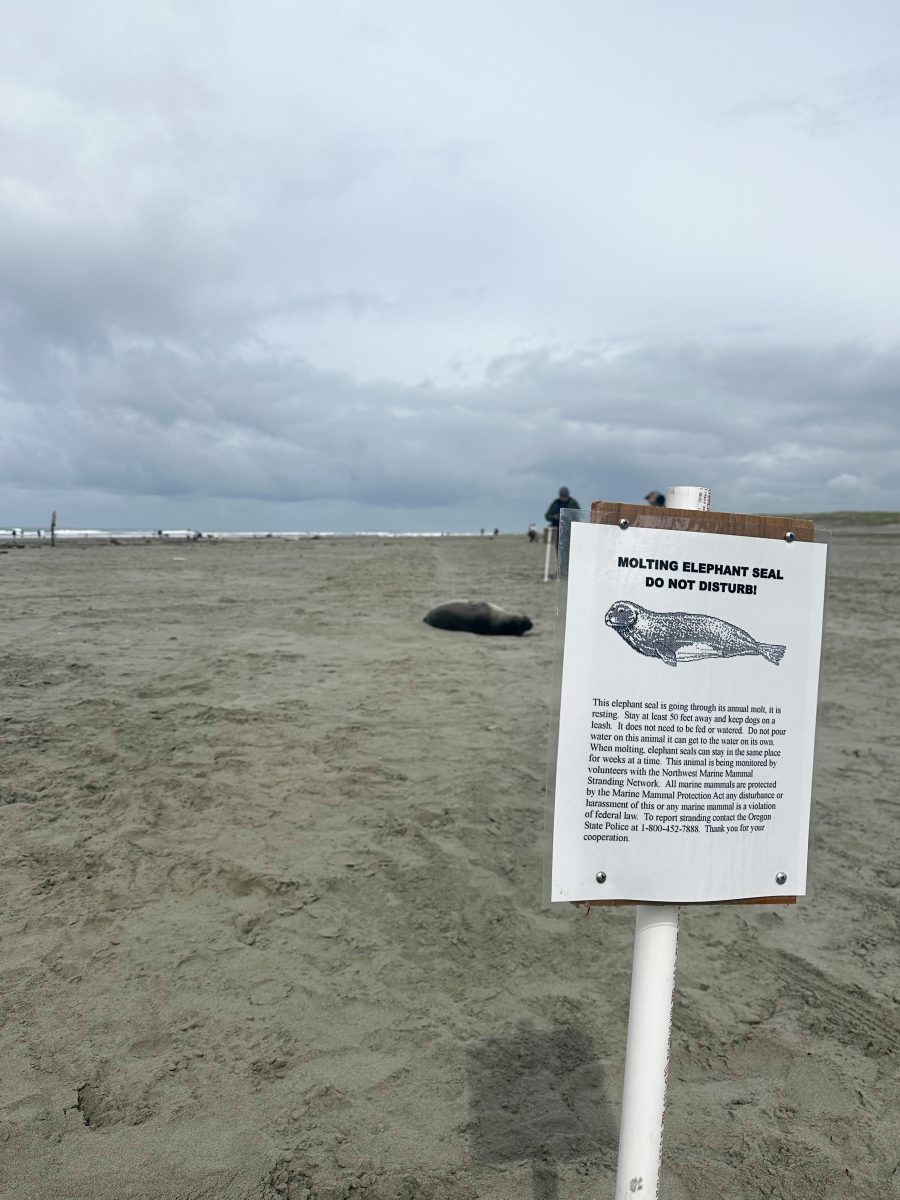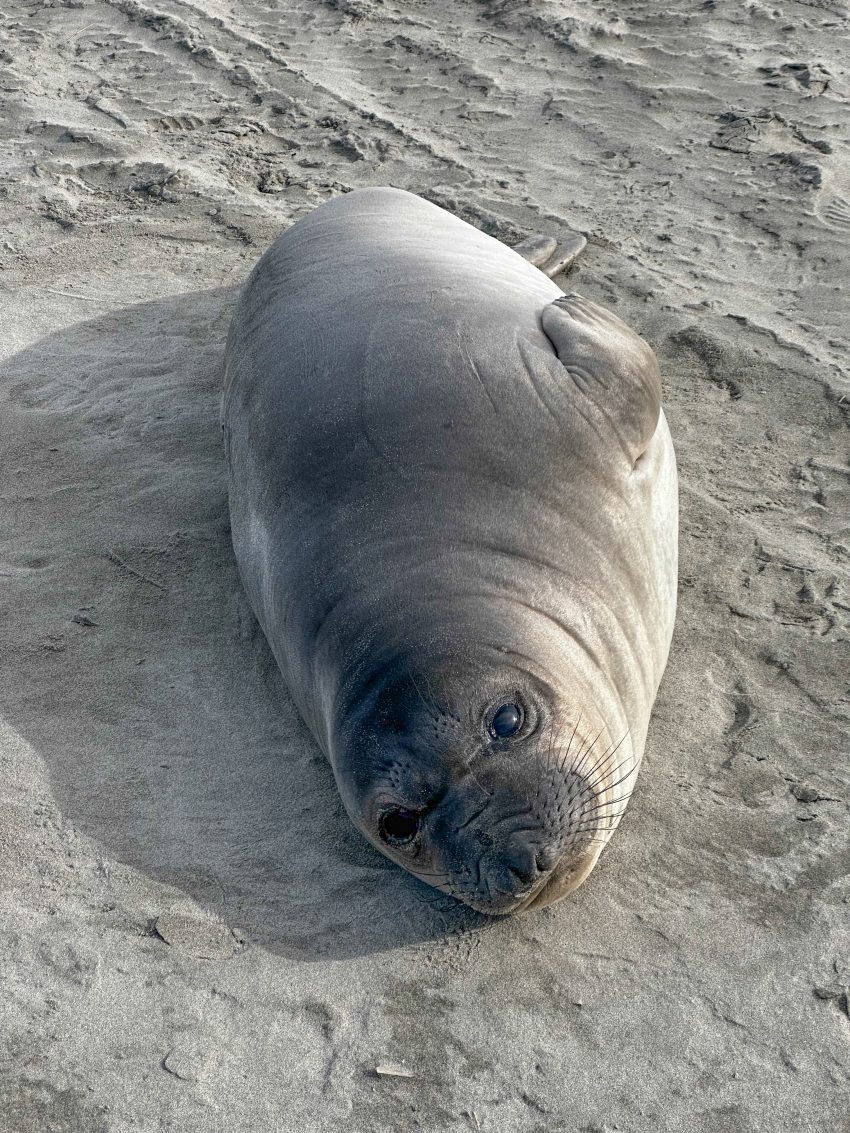Story, Photos & Video by Tiffany Boothe, Seaside Aquarium
This morning, April 1st (no, this is not an April Fool’s joke) a young elephant seal was found lounging in the sun on Seaside beach. This elephant seal is going through its annual molt, which is a normal process and it is resting. Stay at least 100 yards away and keep dogs on a leash. It does not need to be fed and do not pour water on this animal; it can get to the water on its own. When molting, elephant seals can stay in the same place for weeks at a time. This animal is being monitored by volunteers with the West Coast Marine Mammal Stranding Network. All marine mammals are protected by the Marine Mammal Protection Act any disturbance or harassment of this or any marine mammal is a violation of federal law. To report a marine mammal stranding please call 1-866-767-6114 to connect to your local Stranding Network. Thank you for your cooperation and for sharing the shore with marine mammals in our community.
 The northern elephant seal is the largest of the “true” seals in the Northern Hemisphere. Adult males use their large, inflatable noses during the winter breeding season to resonate sound when vocally threatening each other. The largest colonies of northern elephant seals are found off southern California in the Channel Islands. They have one of the longest migrations of any mammal; some have been recorded traveling over 13,000 miles roundtrip.
The northern elephant seal is the largest of the “true” seals in the Northern Hemisphere. Adult males use their large, inflatable noses during the winter breeding season to resonate sound when vocally threatening each other. The largest colonies of northern elephant seals are found off southern California in the Channel Islands. They have one of the longest migrations of any mammal; some have been recorded traveling over 13,000 miles roundtrip.
Northern elephant seals were once thought to be extinct due to commercial sealing in the 1800s. A small population survived in Mexico and the population began to steadily increase in the early 1900s. Today, robust populations of northern elephant seals in the U.S. and Mexico are derived from those few hundred individuals that survived in Mexico.



.png)